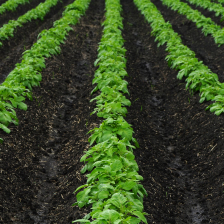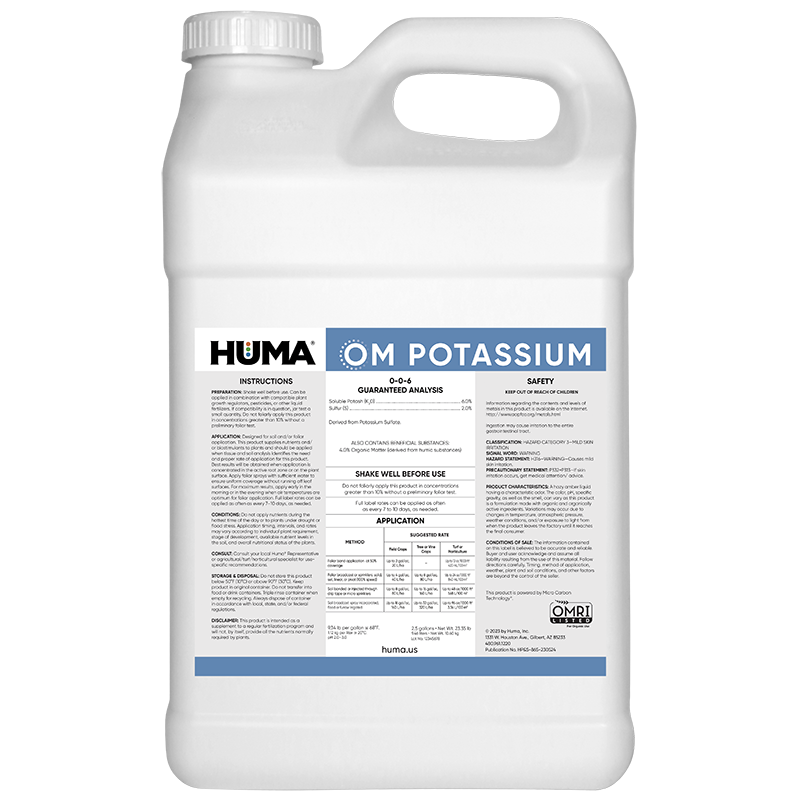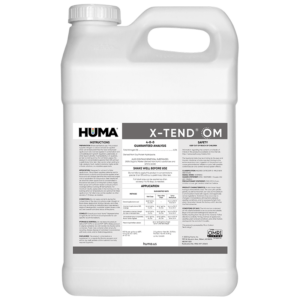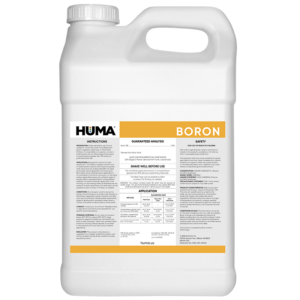OM POTASSIUM
Benefits of Use:
- Effectively treats potassium deficiency symptoms
- Provides quick crop response and can be applied just prior to crop need
- Can be applied foliarly (according to label directions) without risk of phytotoxicity
- Resists tie-up in the soil and remains available through the plant root system
- Can be effectively tank-mixed with other organic crop inputs
- Is a non-salt-contributor and does not contain chloride
- Aids in potassium uptake in heavy clay, compacted, or high-salinity soils
- Is completely water soluble and can be water incorporated
FAQs
Related Products
Related Case Studies

Huma® Organic Fertilizers Easy to Use, Improve Yield on Organic White Corn
Objective The objective of this field trial was for the grower to evaluate the ease of use and the effectiveness of 4 OMRI-Listed liquid Huma® organic crop nutrition products based on known field deficiencies. Materials & Methods The organic producer provided 2 80-acre plots of organic white corn in eastern Nebraska that was at the
Related Blog Posts

Welcome to Huma®: Humic Solutions with a Human Touch
I am extremely proud to officially unveil our company’s new branding and name. We are now Huma®– a 50-year-old legacy ready to be reintroduced to the world! It is a strategic decision to shorten our name from Bio Huma Netics® (BHN) to Huma® and we are confident that this progressive move is in our company

This Week in Ag #19
Rain makes grain. Those words are as old as farming itself. In the nation’s breadbasket – the three I states, which produce 42% of our corn and 37% of our soybeans – there’s concern over the lack of rain. That triggered a major movement in the grain market. Drought officially grips 100% of the I

NITROGEN vs. CARBON – NEW AND IMPORTANT INFORMATION
For decades the conventional thinking has been that applications of synthetic nitrogen fertilizers help enhance soil carbon levels by stimulating soil microbes to feed on organic matter from crop residues. New research indicates that, in fact, the opposite may be true.A group of scientists at University of Illinois says that research from the Morrow Plots,






